From the perspective of the evolution of the technical parameters of the slitting machine, the balance of high speed and high precision is the core proposition of the development of the industry. With the dual improvement of production efficiency and product quality requirements of downstream industries such as lithium battery, photovoltaic and thin film, slitting machine manufacturers are looking for the optimal solution of the two through technological innovation. The following are key trend analyses and balancing strategies:
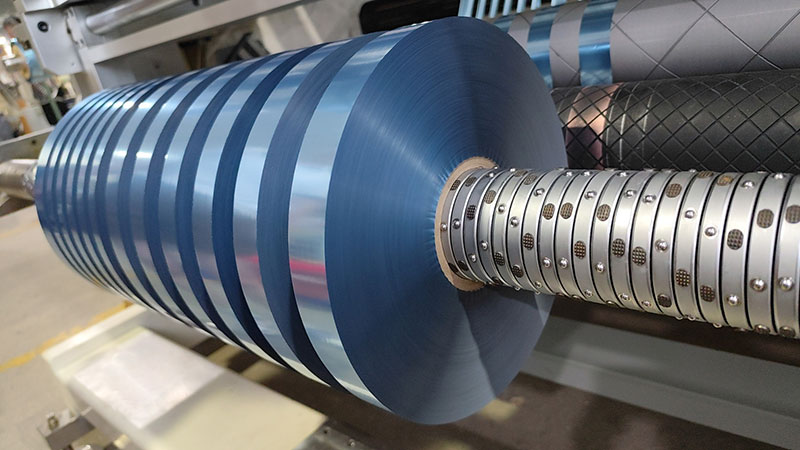
First, the technical contradiction driven by industry demand
1. High speed requirements
◦ Lithium battery industry: The slitting speed of battery cell separator film has been increased from 50m/min in the early stage to more than 300m/min to maximize production capacity.
◦ Packaging industry: the slitting speed of flexible packaging film is generally required to be 500-800m/min, and some high-end models exceed 1200m/min.
2. High precision requirements
◦ Optical film: The slitting width tolerance should be controlled within ±5μm, and the burr should be ≤1μm.
◦ Copper foil current collector: The burr at the edge of the pole piece slitting must be ≤ 3μm, otherwise the safety of the battery will be affected.
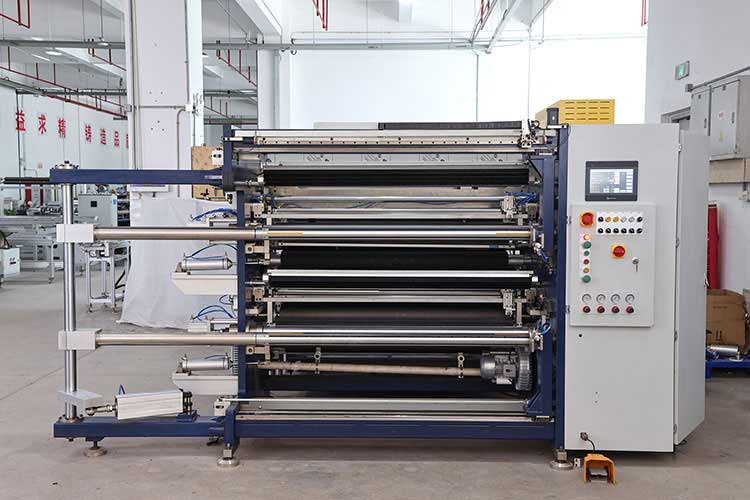
2. Five major ways to achieve technical balance
1. Application of dynamic compensation system
◦ Using laser real-time width measurement + servo guiding system (such as BST's AirShaft technology), it can still maintain ±0.1mm accuracy at 600m/min speed.
◦ Hydraulic oscillating toolholder in Achenbach, Germany, with a fine-tuned response time <0.01s.
2. Upgrade key components
◦ Spindle runout accuracy: The radial runout of the air-floating spindle is controlled within 0.5 μm (about 5 μm for the traditional mechanical spindle).
◦ Tool technology: The life of diamond-coated knives is increased by 3 times, and the hydraulic constant tension system is used to reduce the tensile deformation of the material.
3. Digital twin pre-tuning
◦ Siemens slitting solution optimizes parameters in advance through virtual commissioning, and the speed-accuracy matching efficiency is increased by 40% in actual production.
4. Modular design
◦ Speed/Precision mode switching in Hirano, Japan: Automatically relaxes the tolerance zone (±0.3 mm →± 0.5 mm) in high-speed mode, reducing changeover time by 70%.
5. Vibration reduction of new materials
◦ The carbon fiber composite frame reduces vibration by 30% compared to steel structures, and Henkel's latest damping adhesive suppresses high-speed vibration amplitude to <0.05mm.
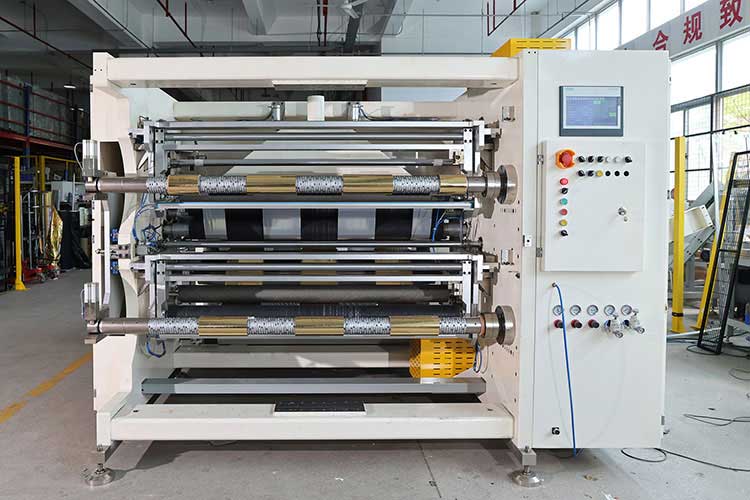
Third, the differentiation of industry technical routes
| Fields of application | Speed priority | Accuracy priority | Typical solution |
| Packaging films | ★★★★★ | ★★☆ | Mechanical high-speed flying knife + inflatable shaft |
| Lithium battery separator | ★★★★☆ | ★★★★☆ | Magnetic levitation tension control + visual closed loop |
| Optical display film | ★★☆ | ★★★★★ | Nano-scale air flotation guide rail + low-temperature plasma cutting |
Fourth, the direction of future breakthroughs
1. AI real-time optimization system
For example, Han's Laser's DeepCut system dynamically adjusts through deep learning: when a fluctuation in material thickness is detected, it automatically reduces the speed by 10% in exchange for stable accuracy.
2. Supercritical fluid cutting
Laboratory-stage waterjet slitting technology can achieve speeds of 2000 m/min while maintaining an accuracy of ± 1 μm, but at a cost 5-8 times higher than traditional methods.
3. Quantum sensing detection
The quantum position sensor developed by the CUTTING-EDGE project in the United Kingdom has a theoretical detection resolution of 0.1nm.
5. User selection suggestions
• Cost-sensitive: choose mechanically compensated slitter (15-20% loss of speed, but 40% lower price)
• Production of high-end materials: Priority is given to models with "speed-precision adaptive algorithms" (e.g. Brückner's SyncroLine series)
• Flexible production needs: Focus on equipment equipped with digital twin systems, and changeover time can be shortened to less than 15 minutes.
The current industry consensus is that the absolute "high speed + high precision" is still subject to physical limits, but through scenario-based compromise (such as sacrificing 5% speed for accuracy jump) and technology combination innovation, it can meet the needs of most industrial scenarios. In 2024, the new Japanese JIS standard will divide the slitting machine into two types of certification: "speed type (S-Class)" and "precision type (P-Class)", marking the official differentiation of the technical route.

The core criterion for judging the quality of a ribbon slitting machine is its ability to avoid slitting losses.
03. January, 2026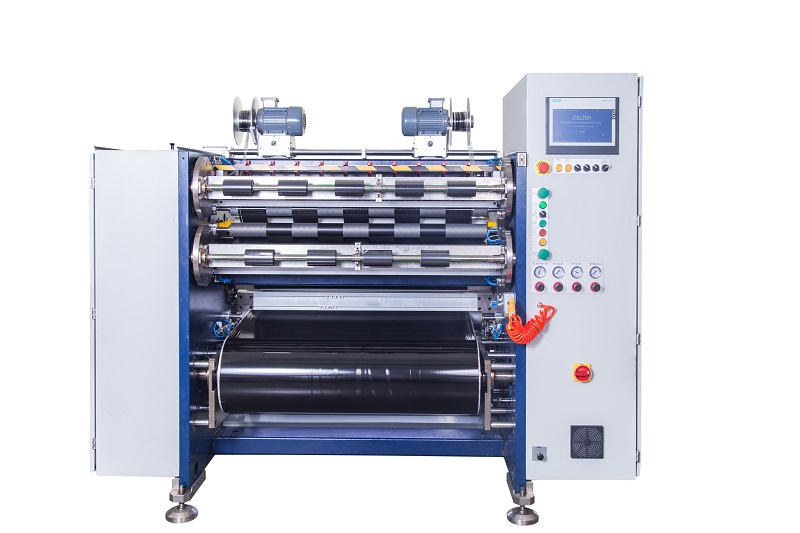
With a wide range of devices on the market, decision-makers are often caught up in the triple factor: price, brand, and performance.
03. January, 2026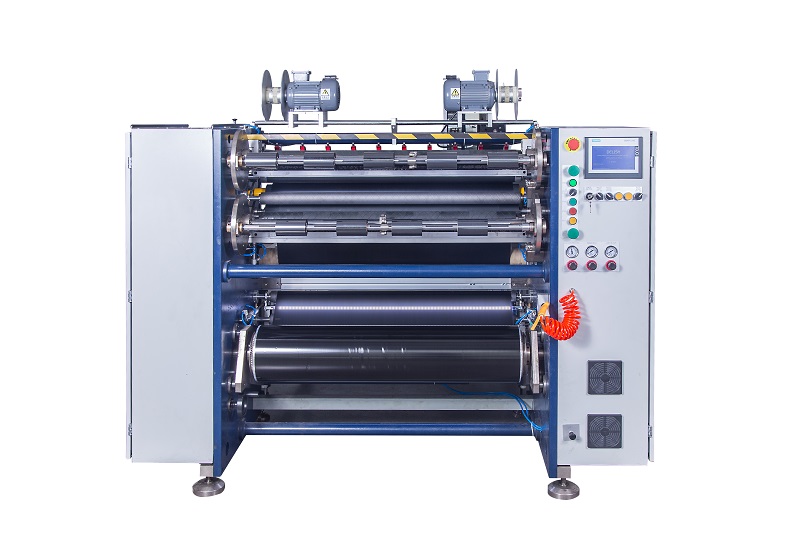
how to choose a slitting machine that truly suits your needs? Here are five key points you must know before buying.
03. January, 2026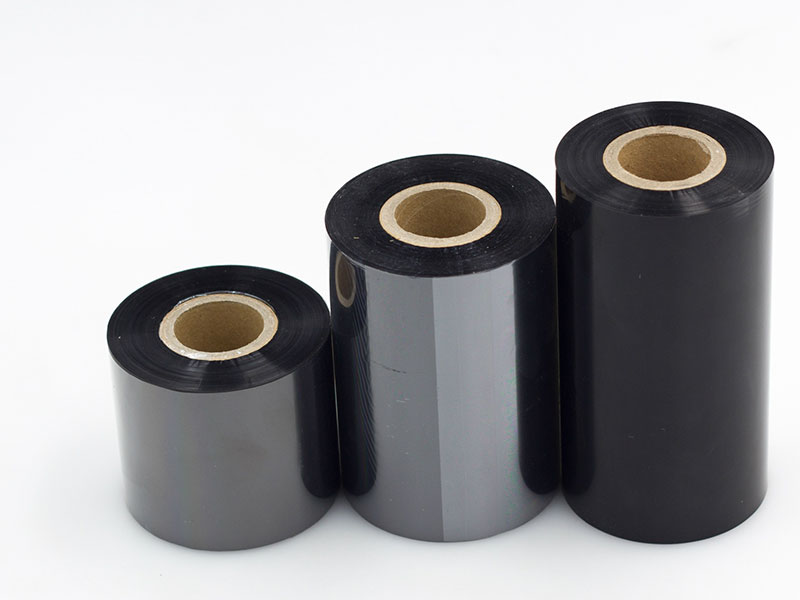
Finding the reliable way to industrial ribbon slitting machines is a comprehensive practice of precision engineering, intelligent control and system optimization.
02. January, 2026
By mastering these three forces, you will master the weapon to cut out a brilliant future in the fierce competition.
02. January, 2026